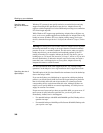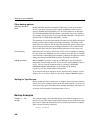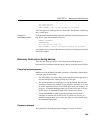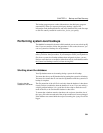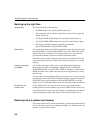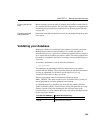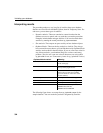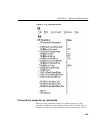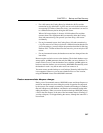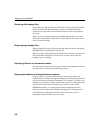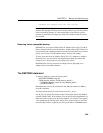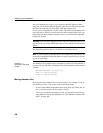
CHAPTER 11 Backup and Data Recovery
393
Ensuring that all files
exist
Before restoring, review the table of contents of the backup to ensure that all
files required for IQ are present. The list of files depends on your application.
See the discussion of required and optional files in “Backing up the right files”
on page 392.
Checking ownership
and permissions
Ensure that ownership and permission levels do not change during the system-
level restore.
Validating your database
Backing up a database is useful only if the database is internally consistent.
Backup always makes sure that a database is in a usable state before it
proceeds. However, it's a good idea to validate any database before you back it
up, to ensure that any database you restore is stable. The restore program does
not check for corruption in the data it is restoring, since the database may not
even exist.
To validate your database, issue the following command:
sp_iqcheckdb
You should run sp_iqcheckdb periodically, and whenever you suspect a
problem with the database. The sections that follow provide basic information
on using
sp_iqcheckdb. For full details see the Adaptive Server IQ
Troubleshooting and Error Messages Guide.
This stored procedure works in conjunction with the set option
DBCC_OPTION. This option should be set to its default value, 0, when you
run
sp_iqcheckdb for a routine validation before backup.
sp_iqcheckdb reads every database page from disk into memory and does
various consistency checks. For this reason, running this procedure on a large
database can take a long time. Reading the data consumes most of the
execution time, so you can estimate how long it will take to run the procedure
by the size of your database:
For this size database It takes about this long
10GB 30 minutes
100GB 400 minutes (6 1/2 hours)




